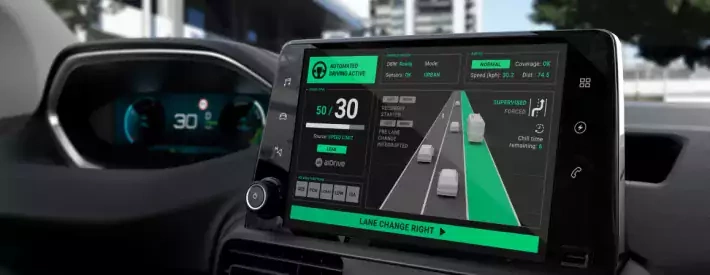Don't get caught at the wheel, get your automated driving terminology right

The industry facing a rate of change not seen for a century and that can make it difficult to stay on top of the right terminology. Arguably nowhere is this more important than in the automated driving sphere – when is self-driving actually self-driving?
Sponsored by the UK Government’s Centre for Connected and Autonomous Vehicles (CCAV), the latest edition of BSI’s Connected and Automated Mobility (CAM) Vocabulary was launched in April 2023. It includes 103 key definitions and 60 commonly used abbreviations. And you definitely need to know them.
Nick Fleming, Associate Director at the BSI says: “This is the fifth iteration of the vocabulary we launched in 2020, and it has evolved significantly. By amending the title from CAV to CAM (along with the whole standards programme that BSI is developing with CCAV), we are recognising that connected and automated vehicles will exist within a broader transport ecosystem.
“It’s not about looking at self-driving vehicles in isolation. The technologies will be core to a range of future mobility solutions – private vehicles, light passenger services and commercial freight. Safety is paramount. CAM is where the industry is headed and standards will take that wider viewpoint.”
As to the most interesting changes this time around, Dr Nick Reed, of Reed Mobility says: “There was a big expansion in the number of terms in version four, so we've rationalised and sharpened the definitions. The beauty of the process is that it allows this kind of rapid evolution – the ability to look back six months on, to update or amend as technologies mature. For example, there have been significant developments in the remote driving arena, so we’ve improved those definitions and removed terms we felt were confusing.
“One definition I particularly like is automated driving. It's very simple now. Automated driving is when the dynamic driving task is performed by the automated driving system. That's it. There are notes to help the reader understand exactly what we mean, but that's a really clear definition of what is, and, just as important, what isn't, automated driving.
“We've removed terms like Software Development Kit and Real Time Kinematics, that weren't adding much value in a CAM context, and we've added helpful terms from other standards, like Static Entity and Dynamic Entity.
“Putting the vocabulary together is interesting and challenging, with the technical advisory group including people from academia and the public and private sectors. One day we’ll reach an asymptote where much of the technology is standardised, but we're not there yet. You only need to look at the media coverage of Ford’s hands-free announcement to see that there’s a lot of work still to do.”
Fleming continues: “It's not easy to arrive at succinct definitions that everyone’s comfortable with. It requires a lot of consensus building. This vocabulary is fundamental to our wider CAM programme. It was the first standard developed through BSI’s Flex process, which has now been adopted across BSI. We're increasingly finding, especially in areas of emerging technologies, the value of developing standards in a more agile way – to be able to make changes more frequently. That's positive from a perspective of informing and supporting regulatory development. Standards work well when they are a common touch point.
“The industry has been on a bit of a journey, moving from autonomous to automated vehicles, and increasingly we’re now talking about self-driving. We’ll soon be starting work on new standards relating to remote operation. The technology can be used as a fallback capability for self-driving vehicles, and for vehicles with more limited automation – to deliver and collect lease vehicles, for instance.
“Over the next few years, we’ll be looking at standards focused on the testing and validation of self-driving technologies – thinking about cybersecurity and what good operational safety looks like. Standards can help to ensure that the transition from advanced trials to commercial deployment happens safely, bringing all the societal benefits to life.”
So, the next time someone mentions self-driving – or any other term related to connected and automated mobility – you can confidently tell them that it isn’t self-driving, but automated driving.




